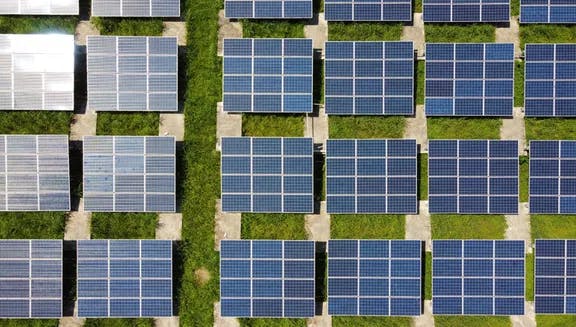
What’s the hype around hydrogen?
Shifts in the global energy landscape
Scientists indicate that we are on a high-risk path for the climate. More than 80% of global energy is generated from burning coal, oil, and gas, releasing billions of tonnes of carbon dioxide, driving climate change. However, a renewable energy transition is already underway, and growing awareness is spurring efforts to cut greenhouse gas emissions.
Transitioning to renewable and low-carbon energy sources is critical to meeting local and international climate goals, such as those outlined in the EU Green Deal. The Netherlands has set ambitious emission reduction targets for 2030 and 2050 in line with the Paris Agreement - requiring significant shifts in its energy sector. A key component of which is hydrogen, an increasingly relevant force in shaping the future of energy.
So, what exactly is hydrogen and how does it work?

Hydrogen is a chemical element, offering a cleaner fuel alternative to methane with advantages thanks to its high energy content and versatility. Through technology, hydrogen can be harnessed from various sources like natural gas, nuclear power, biogas, and renewable energy sources like solar and wind. In its most sustainable form, green hydrogen, it can be used to power major industrial applications without emitting any greenhouse gases. Think fueling transportation, construction sites, and generating power for charging stations. Major industries that require tremendous amounts of power and heat.
However, not all hydrogen is created the same. So, let’s unpack the three most common types:
1. Grey hydrogen: The most common type of hydrogen, grey hydrogen is produced from natural gas through a process called steam methane reforming. Grey hydrogen emits CO2, and is not considered a sustainable source of energy, despite it being the most readily available type of hydrogen.
2. Blue hydrogen: While similar in production process to grey hydrogen, blue hydrogen involves carbon capture and storage (CCS) to reduce the CO2 emissions. This is estimated to reduce production related emissions by up to 90% in comparison to grey hydrogen.
3. Green hydrogen: Is considered the most sustainable type of hydrogen, made by using renewable energy sources (wind or solar) to electrolyse water, splitting it into hydrogen and oxygen. This makes for a zero-emission hydrogen source that only emits water vapour leaving no carbon residue in the air, unlike fuel or coal.
Green hydrogen’s promise and progress
With hydrogen currently surging in the energy industry, green hydrogen, specifically, holds enormous potential to decarbonise various sectors, especially in industries like long-haul transport and chemical production (such as oil refining, ammonia, methanol, and iron and steel), where emissions reduction is particularly challenging. Not only improving air quality but also enhancing energy security.
With this growth comes policies that directly support investment in hydrogen technologies. For example, the Netherlands recently allocated €800 million to enable the production of carbon neutral hydrogen, aiming to achieve a 4GW capacity by 2030. Additionally, one-third of the €1.8 trillion investments from the NextGenerationEU Recovery Plan and the EU’s seven-year budget will fund the European Green Deal.
Despite this promise, hydrogen still faces significant challenges, including cost, infrastructure, and regulatory hurdles. Green hydrogen production, in particular, remains more expensive than fossil fuels. Meaning, that establishing clear regulations and standards is crucial to facilitate hydrogen adoption and integration into our existing energy system.
Fueling green hydrogen solutions in Amsterdam

Amsterdam has been busy building a strong foundation and is well-positioned to become a global leader in the hydrogen economy, thanks to strategic initiatives and hubs like The Port of Amsterdam, focused on facilitating the import, production, and distribution of green hydrogen.
Key initiatives include the H2Gate Project, a collaboration between the Port of Amsterdam, Nouryon, Tata Steel, and others, aimed at establishing a large-scale green hydrogen import terminal. Next to this, H2@Scale in Amsterdam, brings together government bodies, research institutions, and private companies to advance and scale up hydrogen technologies.
Through continued investments and strong collaboration between the public and private sectors, Amsterdam is set to showcase the potential of its cleantech efforts, and in the process, become an example for hydrogen innovation globally.
Related articles

Watermeln’s green hydrogen generator is electrifying the future

Key facts and figures on Amsterdam’s energy sector

Amsterdam’s top energy startups to watch in 2024

Powering the future: Amsterdam’s rise as a renewable energy hub

Where are they now: decommissioning old wind-turbines

About renewable energy and cleantech in Amsterdam

Climate Cleanup: scaling nature-based solutions to avert climate catastrophe

Schneider Electric: the world’s most sustainable company

Amsterdam’s change champions: Meet Rodney Nikkels

